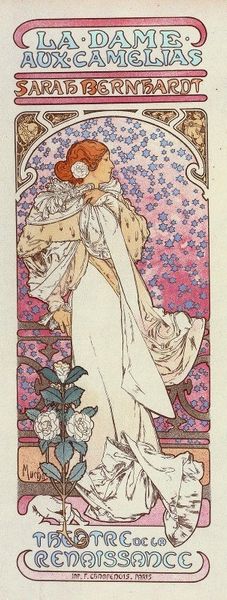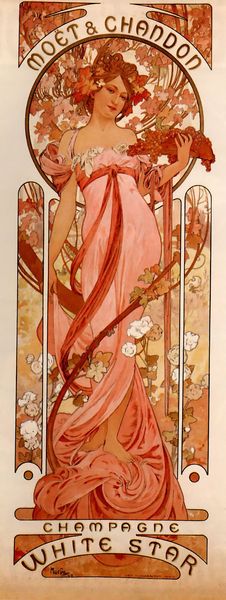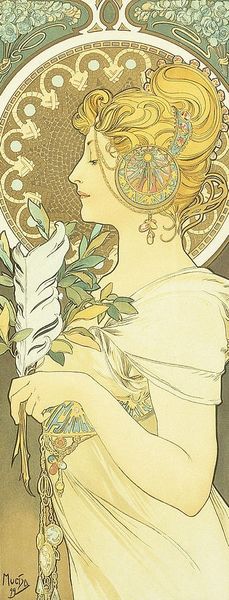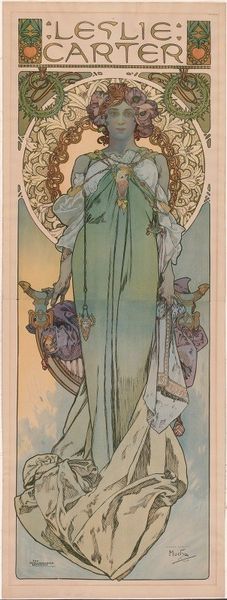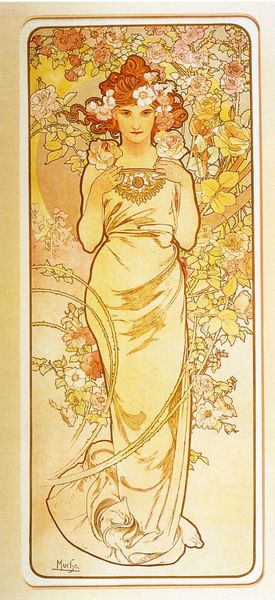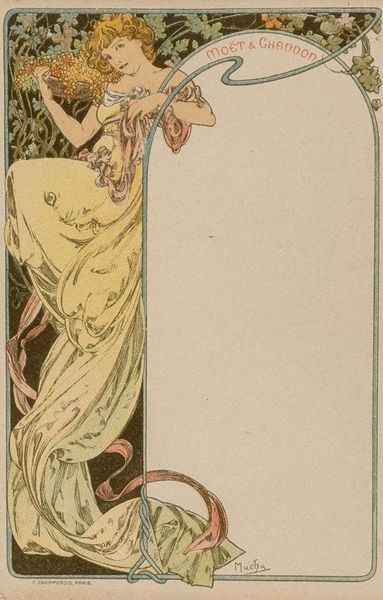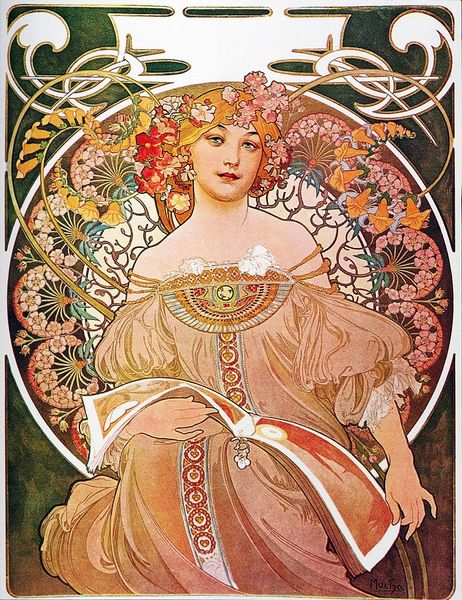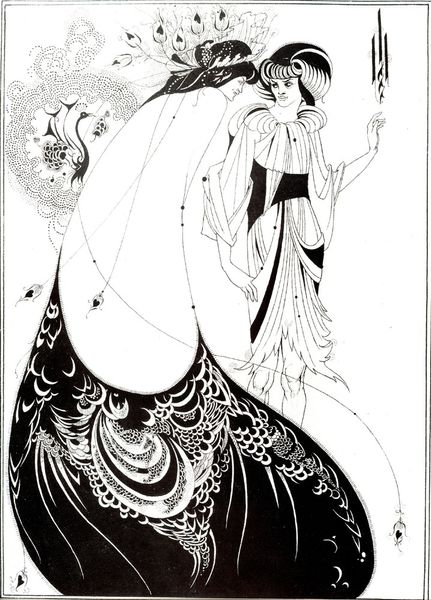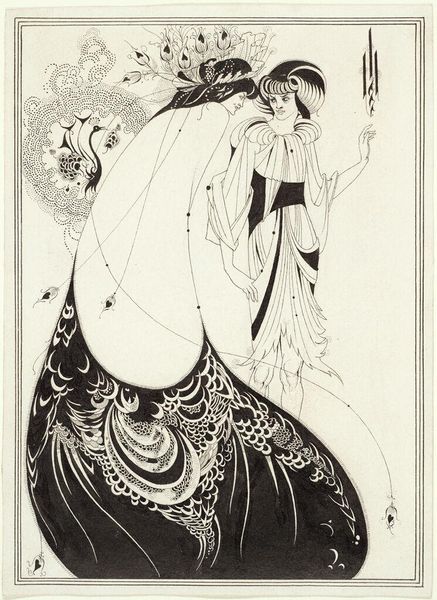
poster
#
portrait
#
art-nouveau
#
symbolism
#
poster
Dimensions: 207.3 x 72.2 cm
Copyright: Public domain
Curator: Standing before us is Alphonse Mucha's 1896 poster, "The Lady of the Camellias." Created in the Art Nouveau style, this piece, a vibrant lithograph, advertises Sarah Bernhardt's performance at the Théâtre de la Renaissance. Editor: The figure’s ethereal quality really strikes me. The cascading gown and floral motifs give a sense of romantic melancholy, almost fragile, against that background of stars. Is this the tragic heroine so beloved in that era? Curator: Precisely. Mucha's posters for Bernhardt were revolutionary; his Art Nouveau aesthetic transformed advertising. His portrayal tapped into the fascination with female characters, often tragically flawed, popular at the time. The play itself, adapted from Alexandre Dumas' novel, deals with themes of love, sacrifice, and societal constraints. Editor: And considering the politics surrounding performances then, how was this image received? It's such a powerful statement of feminine agency, even in tragedy. Curator: It was generally embraced with enormous enthusiasm! It served to promote Bernhardt, highlighting her star power while navigating the tightrope of public expectations for women. Its success was partly because it adhered to certain conventions—beauty, vulnerability—while cleverly subverting others with a unique design style. It helped Bernhardt cultivate her carefully crafted public image as a groundbreaking actress who transgressed typical stage character roles. Editor: I'm fascinated by the layering of meaning: flowers symbolizing purity and impending doom, an icon framed within these powerful art aesthetics promoting Sarah’s revolutionary acting on stage. These combined to create something potent. What do you make of this artwork today? Curator: Viewing "The Lady of the Camellias" today, we see a confluence of artistic innovation, a clever use of commercial art for female advancement, and a window into the socio-cultural values of the period. It’s a reminder of how public imagery could, and can, shape perceptions of femininity and drive discourse on representation. Editor: Definitely. Understanding the work’s cultural and theatrical framework allows us to consider it as something deeply connected with our own engagement in cultural spaces. It is both powerful art and a significant object with feminist value.
Comments
No comments
Be the first to comment and join the conversation on the ultimate creative platform.
